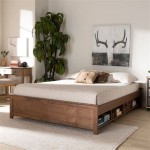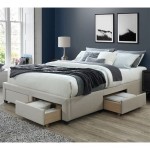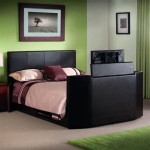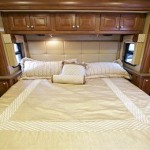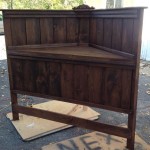How to Make Rails for a Bed
Building bed rails can enhance safety and provide a stylish accent to a bedroom. This guide outlines the process of constructing sturdy and aesthetically pleasing bed rails suitable for various bed sizes and styles. While woodworking experience is beneficial, careful attention to detail and accurate measurements will allow even novice DIYers to create functional and attractive bed rails.
Planning and Material Selection
The first step involves determining the required dimensions. Measure the length of the bed along the side where the rails will be installed. Consider the desired height of the rails as well, factoring in both safety and aesthetics. Sketch a design, including details like joinery methods and decorative elements.
Material selection plays a crucial role in the durability and appearance of the finished rails. Hardwood options such as oak, maple, or cherry offer strength and can be stained or painted. Alternatively, pine or fir offer a more economical choice while still providing adequate support. The amount of lumber needed will depend on the design and dimensions of the rails.
Essential Tools and Safety Precautions
Gather the necessary tools before beginning the project. Essential tools include a measuring tape, saw (circular saw, miter saw, or hand saw), drill, screwdriver, wood glue, clamps, sandpaper, and safety glasses. A Kreg Jig can simplify joinery for those less experienced with traditional woodworking techniques.
Prioritize safety throughout the process. Always wear safety glasses when operating power tools. Ensure the work area is well-ventilated and free of clutter. Follow manufacturer instructions for all tools and materials.
Constructing the Rail Frames
Cut the lumber to the predetermined lengths according to the design. For a basic rectangular frame, two longer pieces will serve as the top and bottom rails, while two shorter pieces will form the vertical supports. The length of the top and bottom rails should match the desired length of the bed rail. The length of the vertical supports will determine the height of the rail.
Join the cut pieces using the chosen joinery method. Pocket hole joinery using a Kreg Jig offers a strong and efficient connection. Alternatively, traditional mortise and tenon or dowel joints can be used for a more classic look. Apply wood glue to the joining surfaces and secure the pieces with clamps until the glue dries completely. Ensure the frame is square during assembly.
Adding Support and Stability
Depending on the design and the weight the rails need to support, additional reinforcement might be necessary. Center supports can be added between the top and bottom rails for increased stability. These supports can be attached using the same joinery method as the main frame.
If the bed rails are intended to prevent rolling out of bed, consider adding slats or a solid panel within the frame. These can be attached using wood screws or brackets.
Finishing and Installation
Once the glue has dried, sand all surfaces smooth, starting with coarser grit sandpaper and progressing to finer grits. Remove any excess glue and round over sharp edges. Apply stain or paint as desired, following manufacturer instructions. Multiple coats may be required for optimal coverage and durability. Allow each coat to dry completely before applying the next.
Attach the completed bed rails to the bed frame. The specific method will depend on the bed frame design. Some bed frames may have pre-drilled holes or brackets designed for attaching rails. If no such provisions exist, brackets can be used to secure the rails to the bed frame. Use appropriate screws and ensure the rails are firmly attached to prevent movement.
Customization and Design Considerations
Bed rails offer opportunities for customization. Consider incorporating decorative elements like routed edges, finials, or inlays. For a rustic look, leave the wood natural or use a distressed finish. The design can be adapted to match the existing bedroom furniture and decor.
For children's beds, ensure the rails are high enough to prevent falls and that the spacing between slats or other infill elements is narrow enough to prevent entrapment. Rounded edges and non-toxic finishes are essential for children's furniture.

Diy Toddler Bed Rail Free Plans Built For Under 15

Diy Toddler Bed Rail Free Plans Built For Under 15

Diy Side Rails For Twin Bed At Home With Ashley

Diy Side Rails For Twin Bed At Home With Ashley

Therapeutic Functional Diy Bed Rails Designertrapped Com

Diy Side Rails For Twin Bed At Home With Ashley

How To Make A Bed From Head Foot The Painted Hive

How To Build A Toddler Bed With Rails At Charlotte S House

How To Make Simple Toddler Bed Rails Build

Diy Side Rails For Twin Bed At Home With Ashley
Related Posts
